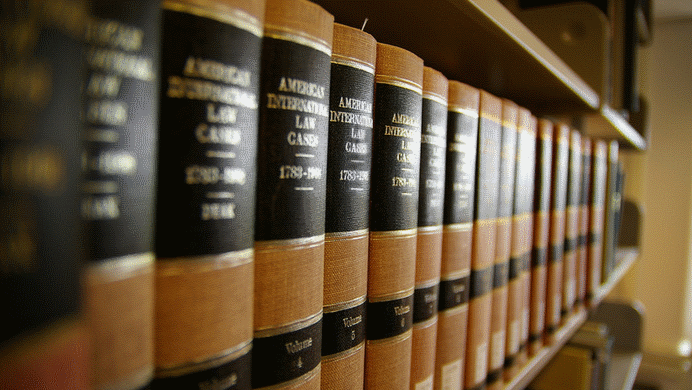Import customs clearance procedures in India
April 07, 2024 हिंदी में पढ़ेंTable of Contents
What is the procedure of Import clearance?
-
Before the arrival of your goods keep ready all the pertaining documents required for import clearance. The major documents required are the Bill of Lading or Airway bill, commercial invoice, packing list, Cargo Arrival Notice, Freight certificate, purchase order or LC, and other specific documents for your goods.
-
Track the shipment of arrival properly to avoid. Because you need to customs clear the cargo as early as possible on the arrival of shipment. Otherwise, you need to pay demurrage to the import handling authorities.
-
A limited number of days of two or three are allowed by import handling authorities as free of cost time duration. You can complete the customs formalities within this time normally, subjected to produce of all required documents with customs.
-
Once the cargo arrives in port, the carrier of goods files an Import General Manifest (IGM) with the customs department. IGM is the details of the import of goods to be filed with customs mandatory, by all carriers once goods arrived. Normally, each aircraft or vessel has one IGM number and each of the consignments carries & lsquo line numbers.
-
you will have one IGM number and a & lsquo liner number' for your particular shipment. You need to enter these numbers in the specified column of the Bill of Entry while filing. This number will be automatically linked with your document while filing and uploading the bill of entry details with customs web software.
-
The Bill of Entry number is generated at one place for all over the ports of a country as per the software queue automatically. If your goods are under green channel clearance, you can directly take delivery of cargo with simple procedures at port.
-
You can view the status of bill of entry online whether any & lsquo query' is there and blocked the process or already & lsquo passed' over to the next procedures. If any & lsquo queries' for further documentation or personal meeting, you can follow the same. The importer or his agent may be called for a personal hearing for any clarification required by customs officials under certain types of goods imported where customs requires more clarification. Once the bill of entry assessment is completed by customs official, the document passes over for inspection. You can arrange the examination of goods by & lsquo goods registration' electronically at the customs department software system.
-
The inspection is carried out under the supervision of necessary customs officials and enters examination reports in the system. Once approving the inspection report by the concerned officer, a bill is & lsquo passed out of customs' for delivery, if no duty amount is involved. If duty is involved, you can arrange to pay the same and produce with the deputed customs officials.
-
Prints of a processed bill of entry are generated and the customs officer signs physically on the said bill of entry. You can arrange delivery of cargo once after submitting the bill of entry of & lsquo passed out of customs with the carrier of goods.
-
The carrier, after collecting necessary charges if any, issued a delivery order to the custodian of cargo. The custodian of cargo delivers cargo to you. You move the cargo to your place.
What types of goods are detained by the Customs office?
Goods are seized by Indian customs in the following cases:
-
If the import/export of the said goods is prohibited
-
If the import/export of the said goods are subjected to conditions that are not fulfilled (imported in excess of allowed quantity, non - declaration, concealment, etc.)
Goods seized by Indian Customs are first kept in sealed condition in godowns/warehouses under the custody of Customs. Then, goods are immediately disposed of. Otherwise, goods are kept in Customs custody until litigation/trial is over. If the court rules in favor of Customs, then goods are disposed of following the procedure otherwise goods are handed over back to the party.
What is the procedure of disposal of goods?
Step 1 - Customs prepares an Inventory of the seized goods with details of description, quality, quantity, identifying marks, and country-of-origin Step 2 - A Magistrate will then,
-
certify the correctness of the inventory so prepared
-
allow taking the photographs in his/her presence and certify those photographs as true
-
allow the drawing of representative samples
Step 3 - Joint Price Committee will inspect the goods and will decide upon the Fair Price/Reserve Price of the goods. Step 4 - There will be 4 days of exhibition of the goods for the inspection of prospective buyers. Step 5 - After inspection, e-Auction of goods will be carried out for disposal. Step 6 - Foodstuff with a value of less than 5 lakh rupees is disposed of through the National Consumer Corporation of India. Step 7 - Metal objects are auctioned through MSTC Ltd. Step 8 - Gold objects are auctioned through the State Bank of India.
What to do when your goods are detained by the Indian Custom?
When a good is detained by the Indian Customs, you receive a notice about the same from the customs office. If your goods were for personal use and not for commercial use, inform about it to the customs office while replying to the notice. The customs office after considering your case and whether you have complied with the terms and conditions of importing such goods will allow you to clear it.
These guides are not legal advice, nor a substitute for a lawyer
These articles are provided freely as general guides. While we do our best
to make sure these guides are helpful, we do not give any guarantee that
they are accurate or appropriate to your situation, or take any
responsibility for any loss their use might cause you. Do not rely on
information provided here without seeking experienced legal advice first. If
in doubt, please always consult a lawyer.
The internet is not a lawyer and neither are you.
Talk
to a real lawyer about your legal issue.

Comments by Users
No Comments! Be the first one to comment.
Related Articles
Customs & Central Excise Law Articles
User Reviews
I have lost documents of goods what to do?
good one please share export procedure
nice article. Please share the procedure to clear goods from customs
goods ceized by custom authority what to do
please share custom charges for importing goods
thank you for the information
very good article. Can you tell me more about the law?
Good work with the article.
good advice. Who can I contact for my legal issue?
Gave me a very clear idea of the subject.
good article. Please provide more info
thanks for the information
Very nice article. English is very simple. Thank you for the information.
Very helpful in understanding the law.
Understood the subject with clarity.
thanks for the information
Written in a very simple language.
It’s a very nice article.
Good work with the article. Solved all my legal queries. Regards.
nice artcile
needed more information on the law
Very good article
Detailed and informative.
VIEW ALL


 663+ Lawyers are online
663+ Lawyers are online 






